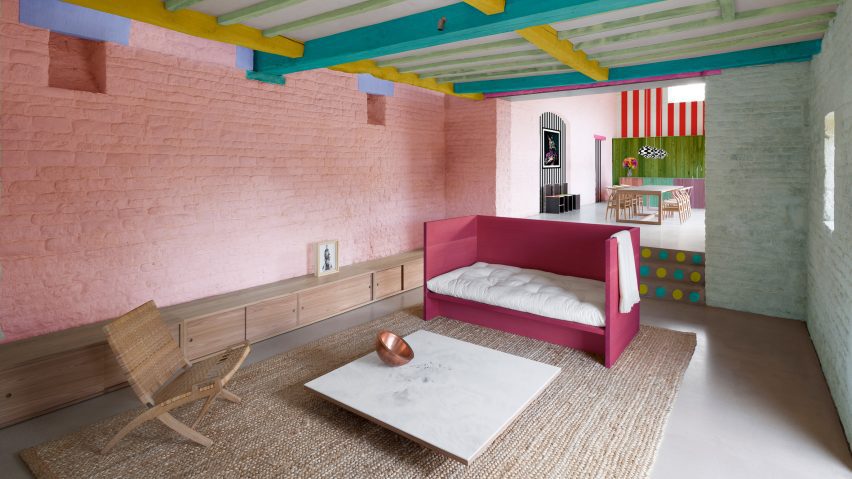Minimalist British designer John Pawson has ditched his pared-back aesthetic in favour of full-blown maximalism, Dezeen understands.
Pawson, who is not an architect, had become famous for his minimalist designs and was awarded a CBE in 2019.
But a source close to Pawson informed Dezeen that he has now embraced bold colours, clashing patterns and animal-print furnishings after a dramatic change-of-heart.
"I went to the Pawsons' place in the Cotswolds recently and it's like night and day," the source said. "They've wallpapered over the white-brick walls and stuck some garish curtains over the windows."
"And the soft furnishings, my god. You can barely move for patterned rugs and blankets."
Possible social-media link
However, not-an-architect Pawson appears to have chosen to maintain a minimalist approach in his relationship with the media.
Asked if he could explain his reversal in tastes, he replied: "No."
The source speculated that Pawson's shift in style may be linked to social media.
In 2018, he surprised some by releasing a book of vivid photographs, telling Dezeen at the time that he had discovered a love of colour through Instagram.
"Maybe he's moved on to TikTok," the source said.
Maximalism has been a re-emerging trend over the past couple of years, partly driven by its popularity on the video-gallery platform.
His studio declined to answer questions about whether Pawson – who, again, is not an architect and Dezeen would never suggest anything to the contrary – will apply his new-found personal partiality to maximalism to commercial projects.
However, a spokesperson said: "When are you doing another Hot List? John would really like you to do another Hot List."
Pawson, whose most high-profile projects include the Novy Dvur monastery in the Czech Republic and the Design Museum in London, ranked at number six on Dezeen's Hot List of newsworthy designers and brands in 2017.
Last week, a Deyan Sudjic-authored biography of Pawson's life and work was published, but did not mention his switch to maximalism.
The photography is by Gilbert McCarragher, with additional input from Studio Merlin.

